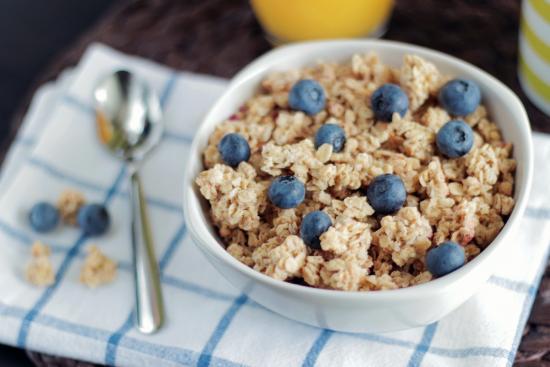
Hidden Benefits of Starches
When we think about our diet, the number of carbohydrates we consume is often at the front of our minds. After all, “How many carbohydrates should we eat?” is one of the great debates in nutrition, dividing those who follow a vegan or Mediterranean diet with those that swear by a ketogenic and paleo diet for optimal health.
But did you know that most carbohydrates are starches? It’s true! Not to mention, starches have some interesting health benefits that you should be aware of, especially if you’re on a low-carb diet.
Keep reading for everything you need to know about the starches you’re probably already eating or shouldn’t be avoiding.
What are resistant starches?
As I said earlier, starches are found in the carbohydrates in your diet; they’re long chains of sugar molecules. Some types of starch are digested and absorbed by the body, but other starches resist digestion and move through the intestines intact. As you can probably already guess, these are called “resistant starches.”
So what foods are high in resistant starch? Well, surprisingly there isn’t just one type of resistant starch; in fact, there are four types of resistant starches (RS) to be aware of.
The Surprising Ways to Get Resistant Starch
As I said earlier, starches are found in the carbohydrates in your diet; they’re long chains of sugar molecules. Some types of starch are digested and absorbed by the body, but other starches resist digestion and move through the intestines intact. As you can probably already guess, these are called “resistant starches.”
So what foods are high in resistant starch? Well, surprisingly there isn’t just one type of resistant starch; in fact, there are four types of resistant starches (RS) to be aware of.
RS1: This is the type of resistant starch found in grains, seeds, and legumes. Your body’s digestive enzymes are unable to break these down.
RS2: This is the type found in raw potatoes, green bananas or plantains, and some legumes as well as certain types of corn.
RS3: This is the type of resistant starch that is produced when a starchy food is cooked and then allowed to cool. The cooling process can transform some of the starches that would typically be digestible into undigestible starches through a process called retrogradation.
RS4: This type of starch is chemically modified and found in a wide range of products. One example is guar gum (a type of polysaccharide extracted from guar beans), which is used to thicken canned soups. This type of starch is attractive and used frequently in the food industry because of its “ water-holding capacity, increased viscosity and gel formation and high water-binding capacity,” which make it useful in a variety of prepared and packaged foods.
What are the benefits of resistant starches?
As we already covered, resistant starches aren’t broken down by digestive enzymes in the digestive tract. But then how do they have health benefits if they aren’t absorbed by the body? Well, these starches resist digestion in the stomach and small intestine, ending up in the colon where they act as food for the beneficial (or bad) bacteria living in your gut. Essentially, resistant starches act as soluble, fermentable fibers, which is great news for your digestive health, especially if your baseline microbial diversity is healthy..
Why? Because the byproducts that these bacteria produce have incredible health benefits. For example, when resistant starches are fermented, they create short-chain fatty acids (SCFAs) like butyrate. For this reason and others, resistant starches have the following benefits:
- Enhance neuro-immunoendocrine regulation: The authors of one study posit that short-chain fatty acids play a key role in neuro-immunoendocrine regulation, which they do by mediating the microbiome-gut-brain interactions. This type of regulation balances the nervous system, immune system and hormones in a complex feedback loop. The authors wrote that “…the development of future treatments for central nervous system (CNS) disorders can take advantage of the intimate and mutual interactions of the gut microbiota with the brain by exploring the role of SCFAs in the regulation of neuro-immunoendocrine function.”
- Protect colon health: Some of the main jobs of SCFAs are to provide an energy source for cells in the colon, help boost the protective mucus layer, and influence gene proliferation in a way that prevents colon cancer.
- Balance the immune system: Studies show that SCFAs (especially butyrate) have potent anti-inflammatory properties that can help bring balance back to the immune system — specifically by keeping regulatory T cells healthy, which are the cells that help your immune system distinguish between the body’s own cells and outside invaders.
- Boost overall gut health: Studies show that resistant starch may be beneficial for a wide range of gastrointestinal disorders, including IBS, IBD, and other conditions that affect millions of people every day.
- Better blood sugar control: Research shows that resistance starch can improve insulin sensitivity, thus lowering blood sugar levels in just a few weeks. But before you run off and try getting off diabetes meds by taking resistant starches, make sure you consult with your doctor.
- Weight loss: Many studies have demonstrated resistance starch’s ability to promote weight loss, mainly by promoting satiety at meals and reducing hunger levels.
The daily intake of resistant starches in Westernized countries is often lower than it should be — mostly due to our lack of fresh, whole foods — and our gut and overall health can feel the consequences.
Before you run off to your health food store in search of resistant starch, you need to be aware of a couple of things.







